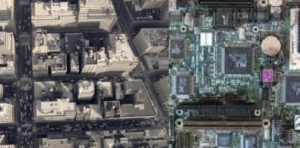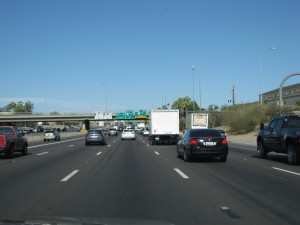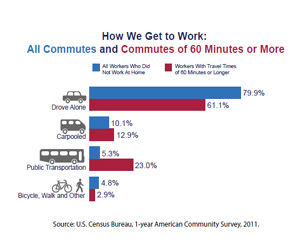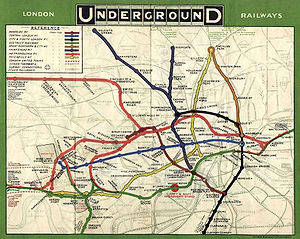It is counterintuitive, but as Wired says, building more roads increases traffic. How can we do better?
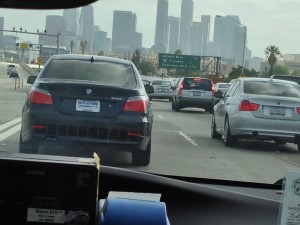 On a wall at Xerox Services in Los Angeles there is a photo of Sepulveda Grade packed with cars from the 1950’s and 1960’s. As a colleague observed the highway is now widened and includes high occupancy (diamond) lanes. But it is just as crowded and congested as before. Researchers, like Giles Duranton and Mathew Turner, study and quantify the relationships between highways and miles driven, modeling demand and weighing different influences.
On a wall at Xerox Services in Los Angeles there is a photo of Sepulveda Grade packed with cars from the 1950’s and 1960’s. As a colleague observed the highway is now widened and includes high occupancy (diamond) lanes. But it is just as crowded and congested as before. Researchers, like Giles Duranton and Mathew Turner, study and quantify the relationships between highways and miles driven, modeling demand and weighing different influences.
We wanted to find a simple way to understand this phenomenon. Crowded highways exemplify how our collective will and intuitions for urban projects can lead to unexpected consequences and failures. The collapse of some exburbs into slums may be another example at the larger scale of cities connecting to surrounding cities. These examples are leading us to reflect on how we could do better in designing smarter, more sustainable urban systems.
Systems: Cities and Circuits
We are struck by the visual similarity of city overviews to circuit boards and chip layouts. With a little imagination, integrated circuit chips and other components look a bit like buildings and other structures. Printed connections suggest streets and carry “traffic” in the form of electrons or information from one place to another.
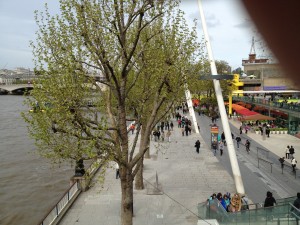 Although the analogy can be useful, the main point is that reasoning about “traffic” requires systems thinking. In both cases designers wrestle with trade-offs in function and connectivity. They design subsystems at multiple levels. For cities, there are rooms, buildings with multiple stories, neighborhoods, main cities, satellite and surrounding cities, and networks of cities connected by highways, trains, and such. For electronic systems we have printed components on a chip, chips on boards, boards in back planes, computers on local area networks, and systems and services connected over the web. These systems-level design and coordination issues arise in all distributed control systems.
Although the analogy can be useful, the main point is that reasoning about “traffic” requires systems thinking. In both cases designers wrestle with trade-offs in function and connectivity. They design subsystems at multiple levels. For cities, there are rooms, buildings with multiple stories, neighborhoods, main cities, satellite and surrounding cities, and networks of cities connected by highways, trains, and such. For electronic systems we have printed components on a chip, chips on boards, boards in back planes, computers on local area networks, and systems and services connected over the web. These systems-level design and coordination issues arise in all distributed control systems.
[pullquote]You can increase bandwidth between subsystems with more and faster connections. But to understand traffic flow, you need to understand what governs people’s behavior.[/pullquote] Successful design in both areas requires the ability to understand how subsystems interact. For example, it is important to distinguish tightly-connected and loosely-connected subsystems at all levels. To increase the maximum traffic or bandwidth between subsystems and reduce turn taking and waiting at rush times, use more or faster connections. However, connections can also make things worse. When systems are connected, activity in one area affects activity and traffic in other areas. Consequently, bottlenecks and congestion can arise.
To understand performance in computing systems designers need to understand load balancing and demand models for programmed systems. To understand the system effects and traffic for cities, designers need to understand what governs human travel behavior.
Time Budgets and Travel
Consciously or not, people have time budgets for travel. The profile of commuters in the U.S. is multi-modal with long and short commutes, but on average Americans travel about 25 minutes each way to work. Besides commuting, people travel at different times of the day for various purposes. The average American day includes not just work, but also entertainment, household activities, shopping, and so on. Each of us decides where and when to travel. Figuring it out is complex. Do we count waiting in line? Walking kids to school? We make choices about travel all day long.
[pullquote]The choices we make are limited by the options available in our environment. [/pullquote]Consider Adam and Betty who live in a city neighborhood. They have a car but also use public transportation. They try to shop wisely, but the costs and varieties of things in their neighborhood stores are limiting. They sometimes go to distant stores, but they are not willing to travel for hours just to shop. When there are good choices for traveling long distances quickly, they are more likely to use them. In a nutshell, this story shows why faster roads and other forms of transportation increase traffic. People travel more when fast connections increase their living options.
Where We Work and Where We Live
[pullquote]People choose places that offer good life choices.[/pullquote]The typical workday traffic pattern is shaped by answers to two questions: Where do you work? And where do you live? Our choices are limited by the options available in our environment. We pick places that offer good life choices.
Commute time is only one factor when people make decisions about where to live. Some people want to spend more time commuting in order to live in a place that provides a better quality of life such as bigger living space, a better school district or other important aspects.
In the 1950’s suburbs started to grow rapidly. World War II had ended and a generation wanted to seize life with a dream of a home in the suburbs. Enabled by cars, cheap gasoline, and investment in highways, suburbs grew all over the country. Half a century later, that approach is breaking down. Energy prices are up and the best paying jobs are in the cities. With their economic efficiencies, cities are offering better choices for new generations. On a global scale people are moving out of the country and into cities and mega-cities. Can we evolve our cities to provide better and more sustainable options for living?
Smarter Cities, Smarter Infrastructure, and Design Patterns
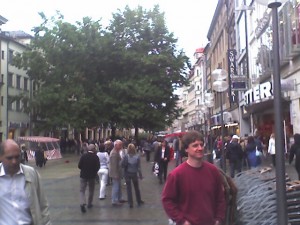 Christopher Alexander was an architect who became well-known in part because of his foundational work on design patterns. Design patterns are good design examples of subsystems, complete with descriptions of where they apply. Alexander paid close attention to how people lived and used spaces in their homes and cities. With his colleagues, he set out to help others create livable designs by providing a book of tested design examples. The idea was to start with the patterns and to adopt and combine them in the design of larger systems. Since then the idea of design patterns has successfully spread to the design of software, computer systems, and distributed control systems among others.
Christopher Alexander was an architect who became well-known in part because of his foundational work on design patterns. Design patterns are good design examples of subsystems, complete with descriptions of where they apply. Alexander paid close attention to how people lived and used spaces in their homes and cities. With his colleagues, he set out to help others create livable designs by providing a book of tested design examples. The idea was to start with the patterns and to adopt and combine them in the design of larger systems. Since then the idea of design patterns has successfully spread to the design of software, computer systems, and distributed control systems among others.
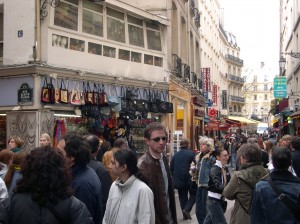 [pullquote]We need urban system design patterns that show where they apply, what their limitations are, and how new technology is changing the rules. [/pullquote] Today new technologies are enabling new design options for cities. Sensors, big data, modeling and analytics are helping to manage shared resources by sensing the environment and providing smart incentives to influence behavior. An example is the use of congestion pricing in London and Singapore. Another example is the use of dynamic pricing for parking in Los Angeles and San Francisco. Cities like Munich turn streets into pedestrian-only shopping areas during midday hours. Cities like London and Portland, Oregon have renewed their waterfront areas to provide people-friendly areas for walking and accessing shopping. Cities like Paris and experimental smart cities like Masdar near Abu Dhabi are paying attention to classical examples of neighborhoods with narrow streets designed for people rather than cars. These are examples of successful patterns. We need more design patterns that show where they apply, what their limitations are, and how they integrate with new technology. Interest is now growing in urban planning and systems designers in creating design patterns for smart cities.
[pullquote]We need urban system design patterns that show where they apply, what their limitations are, and how new technology is changing the rules. [/pullquote] Today new technologies are enabling new design options for cities. Sensors, big data, modeling and analytics are helping to manage shared resources by sensing the environment and providing smart incentives to influence behavior. An example is the use of congestion pricing in London and Singapore. Another example is the use of dynamic pricing for parking in Los Angeles and San Francisco. Cities like Munich turn streets into pedestrian-only shopping areas during midday hours. Cities like London and Portland, Oregon have renewed their waterfront areas to provide people-friendly areas for walking and accessing shopping. Cities like Paris and experimental smart cities like Masdar near Abu Dhabi are paying attention to classical examples of neighborhoods with narrow streets designed for people rather than cars. These are examples of successful patterns. We need more design patterns that show where they apply, what their limitations are, and how they integrate with new technology. Interest is now growing in urban planning and systems designers in creating design patterns for smart cities.
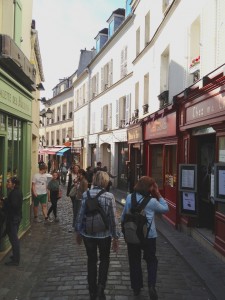 What are the design patterns for neighborhoods that provide people with better options for life choices without needing to travel as much? What are design patterns at the city level and at the “system of cities” level? What design patterns enable easy travel of people without competition with delivery of goods? What are examples of patterns for time-shifting some activities to lower contention and congestion? What are design patterns for reserving use of scarce resources such as loading zones, parking spaces, or very fast travel connections?
What are the design patterns for neighborhoods that provide people with better options for life choices without needing to travel as much? What are design patterns at the city level and at the “system of cities” level? What design patterns enable easy travel of people without competition with delivery of goods? What are examples of patterns for time-shifting some activities to lower contention and congestion? What are design patterns for reserving use of scarce resources such as loading zones, parking spaces, or very fast travel connections?
The urban situation keeps changing. The millenials are adopting to cities, are less likely to have personal cars, and are choosing smaller vehicles. Virtual offices and telecommuting may be on the rise. People are doing more internet shopping with delivery. As things evolve, what other questions should we be asking?
The first underground railways were built in the 1860’s in London. Subways systems increase living options for city dwellers by enabling rapid travel between city neighborhoods while avoiding surface-level congestion and without spreading out the city with surface-level parking facilities. An analogous pattern arises in circuit design with multiple layers of connections in three dimensional chips and also in multi-layer printed circuit boards.
[pullquote]We are looking for tested and inspired patterns at all scales, especially with models that can give quantitative economic and livability indicators.[/pullquote] We find it intruiging that computing technology is not only enabling new options for cities, but that the analogous design problems for computer systems encourage systems thinking and may provide inspiration for new urban patterns. We need patterns at the scale of neighborhoods and also at the scale of urban regions.
This post was written by Mark Stefik, Pai Liu, and Hoda Eldardiry. Thanks to David Cummins, Ken Mihalov, Craig Heberer, Bob Ruybal, Melissa Hart, Walt Johnson, and Barbara Stefik for comments on earlier drafts.

